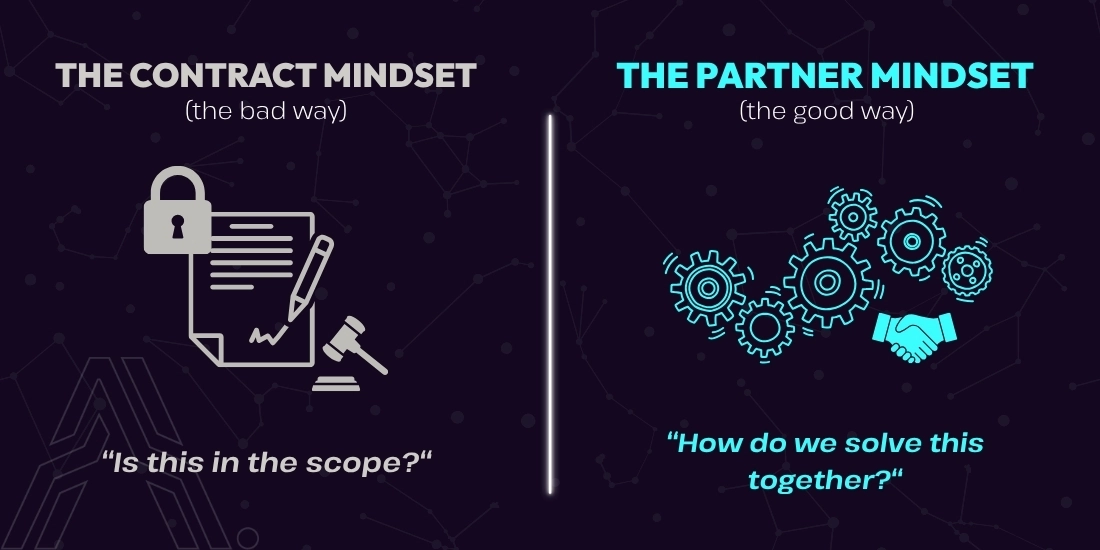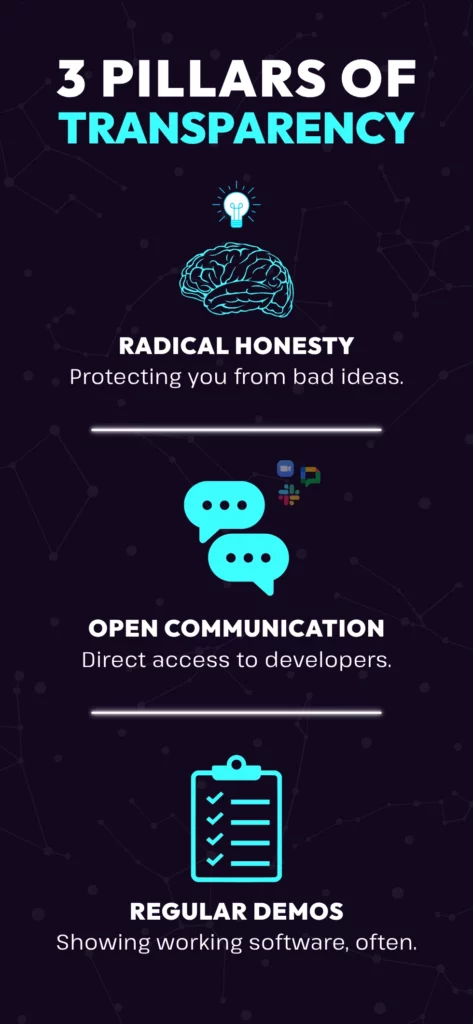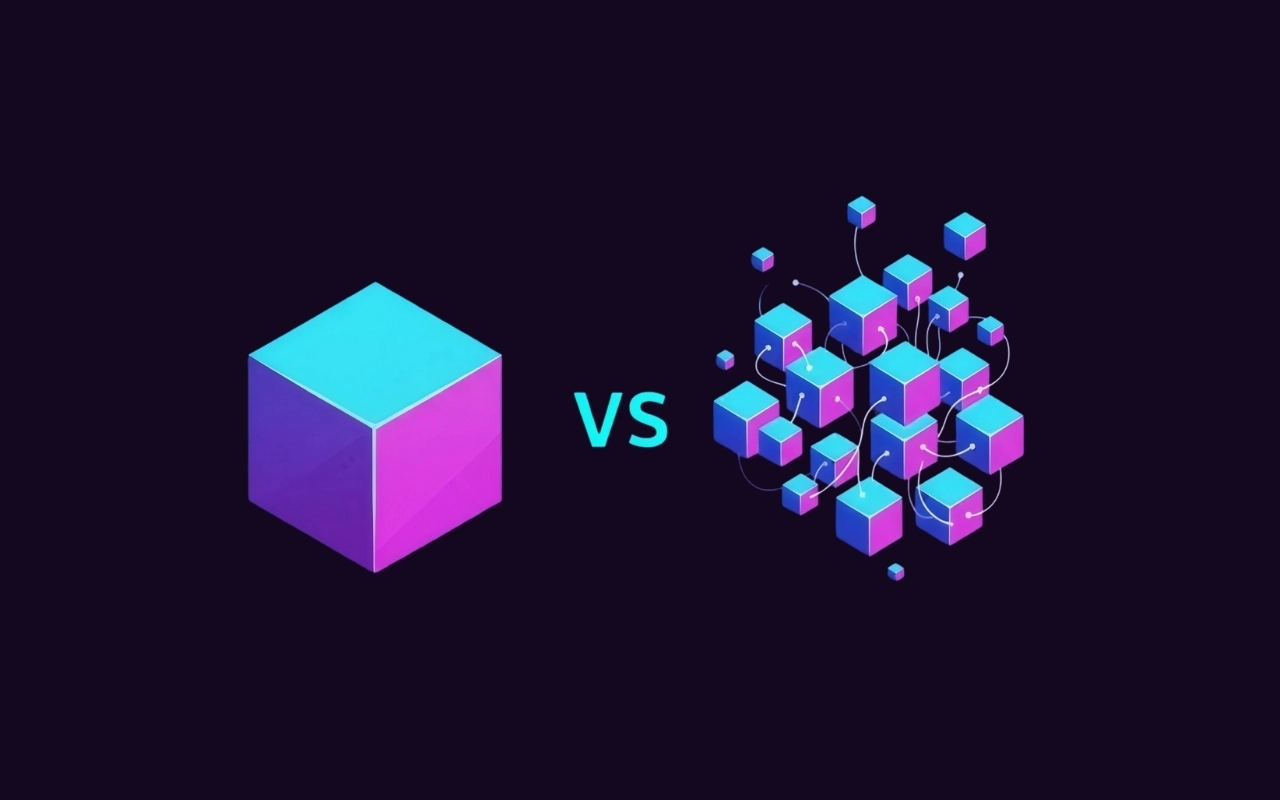Then, inevitably, someone on either side says the magic words: “Let’s check the Statement of Work.”
And just like that, the partnership is over. It becomes a negotiation. Everyone pulls out their copy of that static, months-old document to argue about what was really meant by “user authentication module”. The focus immediately shifts from building a great product to simply covering your own backside.
This adversarial dance is a classic symptom of a broken client-agency relationship, and it’s one of the biggest roadblocks to achieving genuine technical project success. But here’s the thing: the secret to getting it right isn’t a better contract. It is something the SOW cannot possibly contain: relational transparency.
The Contract is a Safety Net, Not a Game Plan
Let’s be clear, a good contract is important. It sets boundaries and outlines what happens in a worst-case scenario. Think of it as the prenuptial agreement for your project; you need it, but if you are referring to it every day, the marriage is already in trouble.
The reality is that projects are living things. They constantly change. Along the way, you learn new things about your customers, a competitor makes a move, or a new opportunity appears that you could not have predicted six months ago.

When you rely only on the contract, the default question becomes, “Is this in scope?”. This question forces a win-or-lose outcome where either the agency eats the cost or the client pays for a change order. On the other hand, a partnership built on transparency asks a better question: “How do we solve this problem together?”. This collaborative approach assumes everyone is on the same team with the same goal, changing the dynamic from a transaction to a true partnership.
What “Relational Transparency” Actually Means
While this all sounds nice, what does it actually look like day to day? This isn’t about vague feelings of trust; it’s about concrete actions and open processes.
 For starters, it means radical honesty. We believe a core part of our job is to protect you from your own bad ideas. If you suggest a feature that we know will be a waste of money or add needless complexity, we are going to tell you. It might be an uncomfortable conversation, but it is the right thing to do for your business. In fact, knowing which uncomfortable questions to ask your next technical partner is a crucial step in finding a team that values this kind of honesty.. An agency just looking to bill hours will gladly build whatever you ask for, but a true partner will care about the outcome.
For starters, it means radical honesty. We believe a core part of our job is to protect you from your own bad ideas. If you suggest a feature that we know will be a waste of money or add needless complexity, we are going to tell you. It might be an uncomfortable conversation, but it is the right thing to do for your business. In fact, knowing which uncomfortable questions to ask your next technical partner is a crucial step in finding a team that values this kind of honesty.. An agency just looking to bill hours will gladly build whatever you ask for, but a true partner will care about the outcome.
This transparency also extends to open communication. The traditional agency model puts an account manager between you and the people doing the work, creating a game of telephone where details get lost. Our approach is different. We put our clients in a shared Slack channel directly with the developers, allowing you to ask questions and get answers straight from the source. There is no black box here.
Finally, it means regular, predictable demos of working software. Instead of showing you static mockups or giving vague status updates, we show you the actual progress every week or two. This practice is fundamental to long-term technical project success because it keeps everyone aligned and holds us accountable, giving you total visibility.
How Transparency Cures Technical Debt
Technical debt is a silent project killer. It is the accumulation of quick fixes and sloppy code written under pressure to meet a deadline, and it thrives in secrecy. When you do not know how your software is being built, it is easy for an agency to take shortcuts that will cost you dearly down the line in bugs, slow performance, and difficult updates.
This is precisely where an open process proves so effective. When you have access to the developers and see the product evolve frequently, there is nowhere to hide. Shortcuts become obvious. As a result, the whole team, both yours and ours, is focused on building a high-quality, maintainable asset for your business. A transparent process naturally leads to a better product simply because it forces a higher standard of work.
Ensure your next partnership is built on transparency from day one.
Download the Autonomous Partner Vetting Checklist
A Great Relationship is the Ultimate Feature
At the end of the day, a 50 page contract cannot save a bad relationship. A great relationship built on trust and transparency, however, can handle almost any project challenge you throw at it.
When you stop viewing your agency as a vendor and start treating them as a genuine partner, everything changes. The conversations become more productive, the work gets better, and you achieve the kind of technical project success that moves your business forward. Ultimately, you build something you can be proud of, together.
Believe in a better way to build? Let’s talk. Schedule a no-obligation strategy call to see what a truly transparent partnership looks like.




